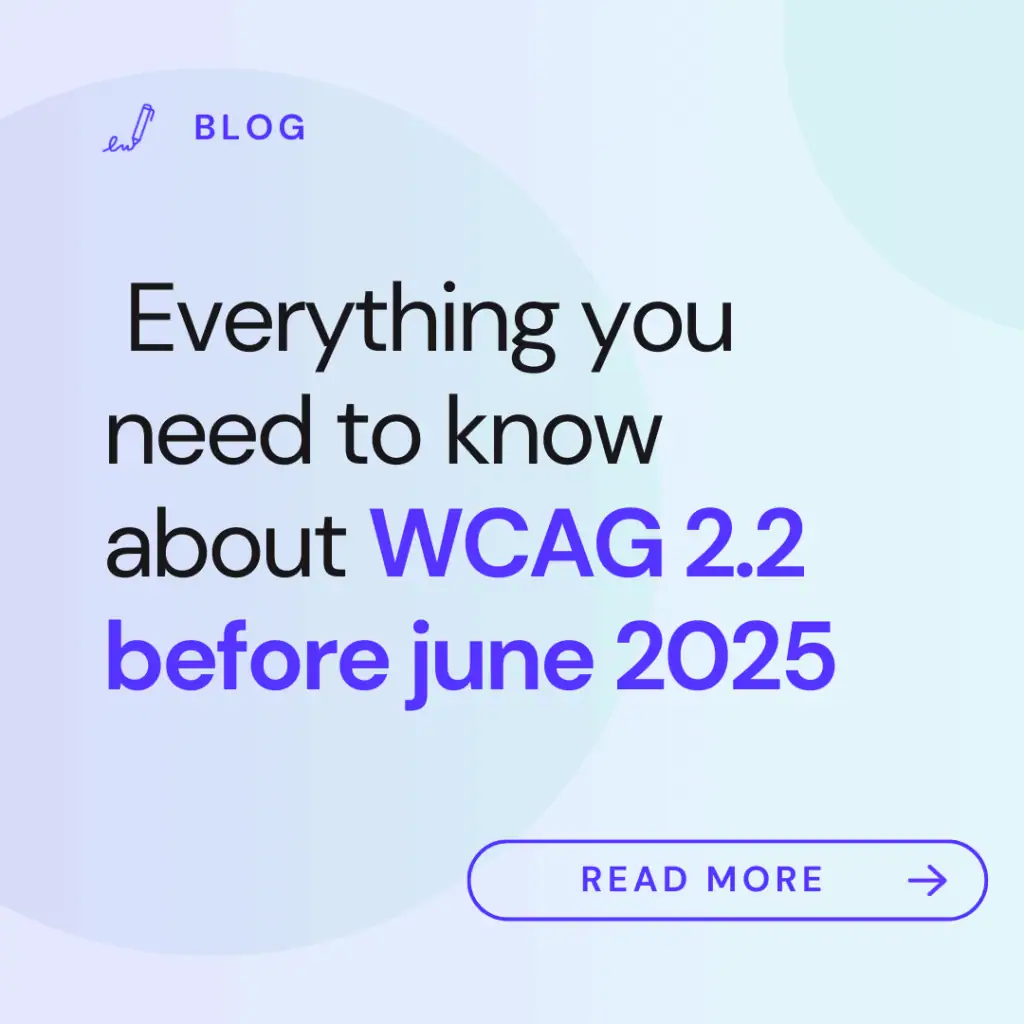

In today’s digital age, ensuring that web content is accessible to everyone—regardless of their abilities or disabilities—is no longer just a best practice: it’s a necessity. The Web Content Accessibility Guidelines (WCAG) are the international standard developed to achieve this goal.
The most recent version, WCAG 2.2, published in October 2023, introduces significant improvements aimed at expanding inclusion in digital environments. In this article, we explain what WCAG 2.2 is, why it’s important, what’s new, and how you can start applying it.
WCAG 2.2 is a set of technical guidelines developed by the World Wide Web Consortium (W3C)—an international organization based in the United States that develops the standards that ensure the web continues to grow and function in an accessible way for all.
Its goal is to make digital content: such as websites, mobile apps, or interactive platforms, accessible to everyone, including people with disabilities, older adults, or those who may face challenges when interacting with digital environments.
These guidelines provide detailed criteria to ensure that information is perceivable, operable, understandable, and robust.
They are based on four key principles:
Version 2.2, released in October 2023, builds on previous versions (2.0 and 2.1), incorporating new recommendations focused on improving the experience for users with cognitive or mobility-related disabilities, as well as those using mobile devices.
WCAG 2.2 adds nine new success criteria, many of which are designed to make it easier for users to navigate and interact with digital content, especially on mobile devices or for individuals with cognitive or physical challenges. A few notable examples include:
Although WCAG guidelines do not have the force of law on their own, as they are issued by a private organization, their adoption as a technical standard is widely recognized internationally.
In the European context, and specifically in Spain, the new Law 11/2023—commonly referred to as the "Accessibility Law"—sets out clear accessibility obligations for private companies that offer products or services online, aligning with EU Directive 2019/882. This law requires that, as of 28 June 2025, all new websites and apps comply with accessibility criteria, and that existing services be adapted before 2030.
Although the law does not specifically mention WCAG 2.2, it does refer to technical standards such as:
This set of European requirements, which is currently aligned with WCAG 2.1, will likely be updated to reflect version 2.2.
Adapting your website or app to accessibility guidelines brings both legal and practical benefits:
You don’t need to rebuild your entire website from scratch or be an accessibility expert. Here are some practical steps to get started:
Digital accessibility is no longer optional. Adapting to WCAG 2.2 not only improves the experience for all users, it also prepares your business for the legal changes ahead. The sooner you start, the easier it will be to meet the June 2025 deadline and offer a truly inclusive digital experience.
Making your website accessible doesn’t mean making it more complex. It means making it clearer, more usable, and more human. And that benefits everyone.
Do you have questions about whether your website is compliant? Do you need help getting up to date with the regulations?
We’re here to help from Lawwwing.